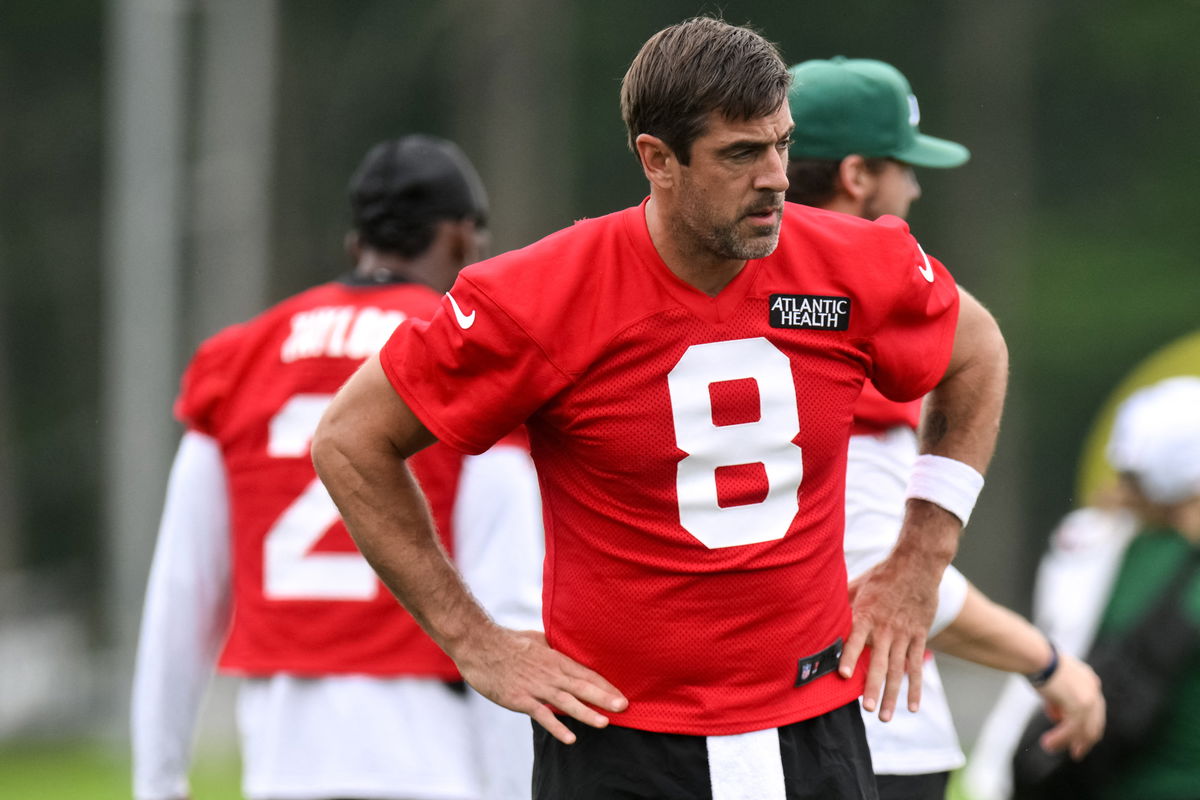
USA Today via Reuters
Jul 25, 2024; Florham Park, NJ, USA; New York Jets quarterback Aaron Rodgers (8) warms up during training camp at Atlantic Health Jets Training Center. Mandatory Credit: John Jones-USA TODAY Sports

USA Today via Reuters
Jul 25, 2024; Florham Park, NJ, USA; New York Jets quarterback Aaron Rodgers (8) warms up during training camp at Atlantic Health Jets Training Center. Mandatory Credit: John Jones-USA TODAY Sports
When Aaron Rodgers’ Achilles blew out at MetLife, it reignited the fiery debate between grass and turf. On the Pat McAfee Show, NFL Chief Medical Officer Dr. Allen Sills served up some real talk: the turf vs. grass debate is still a total head-scratcher.
Watch What’s Trending Now!
“It’s an active area of research,” Dr. Sills explained. The issue ain’t just about the material—grass or turf—but also how each surface is maintained, from moisture levels to the field’s overall condition. The NFL has over 30 different field types, making it tricky to pinpoint which surface is safer. The league’s chief doc added, “What needs to be understood is the physical characteristics that make the field safer vs. not safe, and it’s not just about the material—it’s the way you maintain it, the moisture, etc.”
"We've got thirty different services because every single stadium is different..
It's not just the material but it's how you maintain it..
There's a lot of research happening to get to the safest surface necessary" ~ Dr. Allen Sills #PMSLive pic.twitter.com/1rQUh6t5F1
— Pat McAfee (@PatMcAfeeShow) August 8, 2024
ADVERTISEMENT
While the NFL Players Association is pushing hard for all grass fields, Dr. Sills noted that current studies are still trying to correlate field types with injury rates. “We’re trying to find out better ways to test that, take those results, correlate it with injury, and see what we can learn to get to the safest surface for everybody.”
But here’s where it gets juicy: recent studies suggest that artificial turf might be the bad guy. One study analyzing 4,801 NFL injuries from 2012–2016 found that players suffered 16% more foot and leg injuries per play on turf than on grass. If all games had been played on grass, there would’ve been 319 fewer injuries. Non-contact injuries were 20% more frequent on turf.
Yet, it’s not all doom and gloom. Dr. Calvin Hwang, a team doc for Stanford and the San Jose Earthquakes, revealed newer turf technologies might be safer than the older versions. “Newer generation turfs may be safer than the older gen,” he noted, highlighting the evolving tech that might make older studies outdated. The Chicago Bulls team doctor, Brian Cole, also noted: “The upside of turf is that players feel they’re faster. The downside is they’re faster. It’s a collision sport. Velocity goes up, collisions go up, injuries happen.”
ADVERTISEMENT
This whole grass vs. turf debate was revived last year when Rodgers tore his Achilles tendon.
ADVERTISEMENT
Aaron Rodgers Achilles injury: What likely led to that?
Rodgers’ Achilles rupture at MetLife wasn’t just bad luck—it was a perfect storm. Dr. Robert Glatter, an ex-Jets sideline doctor, breaks it down: A-Rod’s age, the sudden upward movement of his foot, and Leonard Floyd’s weight all combined with his previous calf strain to trigger the injury. “Age and possibly the type of turf were factors,” Dr. Glatter said.
While the NFL Players Association quickly pointed fingers at MetLife’s artificial turf, Dr. Glatter was cautious. “It’s unclear if the turf played a major role,” he noted. The league’s long-term data backs up the players’ preference for grass, showing fewer injuries on natural surfaces. Packers’ David Bakhtiari and Rodgers’ old blindside protector chimed in, “It sucks. No one enjoys playing on it. NFL, just do better.”
The grass vs. turf debate continues, but Rodgers’ Achilles injury has definitely kicked it into high gear.
ADVERTISEMENT
ADVERTISEMENT
ADVERTISEMENT
ADVERTISEMENT

